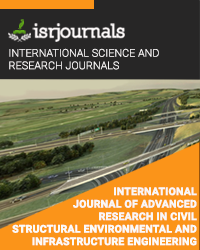bond strength of concrete incorporting bottom ash as pratial replacement of fine aggregate
K.M. Aswin Kumar ,S.Vishal Easwer
Published in International Journal of Advanced Research in Civil,Structural,Environmental and Infrastructure Engineering and Developing
ISSN: 2320-723X Impact Factor:1.7 Volume:3 Issue:1 Year: 11 March,2017 Pages:398-402

Abstract
Concrete is widely used as a construction material in modern society with the growth in urbanization and industrialization and the demand for concrete is increasing day by day. Therefore, raw materials from natural resources are required in large quantities for concrete production. At the same time, a considerable quantity of industrial wastes mostly from thermal power plants is available in large quantity and the disposal of this material becomes a major issue. Fly ash generated in the power stations is consumed in the cement industry whereas the bottom ash is disposed in the open ground. Hence the bottom ash was used as a substitute for fine aggregate in concrete. This project work aims to study the performance of bond strength of concrete containing bottom ash as a partial substitute for fine aggregate with different water cement ratios of 0.37, 0.38, 0.45 and 0.57. The assessment involves determination of bond strength properties of concrete with 40% bottom ash as partial replacement. The bond strength is proposed to be evaluated as per IS: 2770. Compressive strength, Split tensile strength, flexure strength and bond strength curves were determined compared with concrete containing 0% bottom ash were studied of bottom ash concrete
Kewords
bottom ash, compressive strength, pullout test, bond strength
Reference
1. ACI Committee 232. Use of fly ash in concrete (ACI 232.2R-03). Farmington Hills, MI: American Concrete Institute; 2003. 2. Berry EE, Hemmings RT, Zhang MH, Cornelious BJ, Golden DM. Hydration in high-volume fly ash binders. ACI Mater J 1994. 3. ACI Committee 211. Guide for selecting proportions for high-strength concrete with Portland cement and fly ash. ACI 226.4R ACI Mater J 1993. 4. Malhotra VM. Super plasticized fly ash concrete for structural applications Concr Int. 5. Kankam CK. Bond strength of reinforcing steel bars milled from scrap metal. Mat Design 2004; 25(3):231–8. 6. Cusens AR, Yu Z. Pullout tests of epoxy-coated reinforcement in concrete. CemConcr Compos 1992; 14(4):269–76. 7. Short a, Kinniburgh W. Lightweight concrete. 3rd ed. London: Applied Science Publishers. 8. L. Chung, S.-H. Cho, J.-H.J. Kim, S.-T. Yi, Correction factor suggestion for ACI development length provisions based on flexural testing of RC slabs with various levels of corroded reinforcing bars, Eng. Struct. 9. J.G. Cabrera, Deterioration of concrete due to reinforcement steel corrosion, Cem. Concr. Compos. 18 (1) (1996) 47–59.

